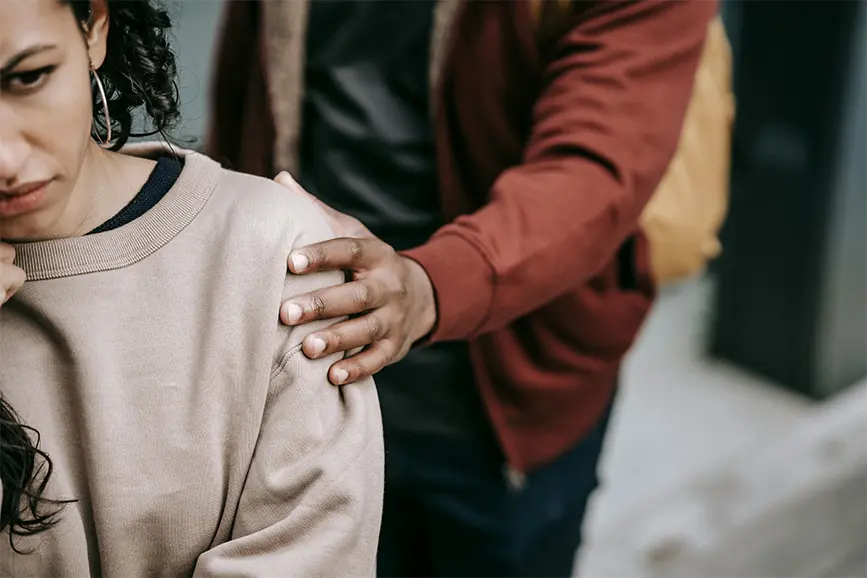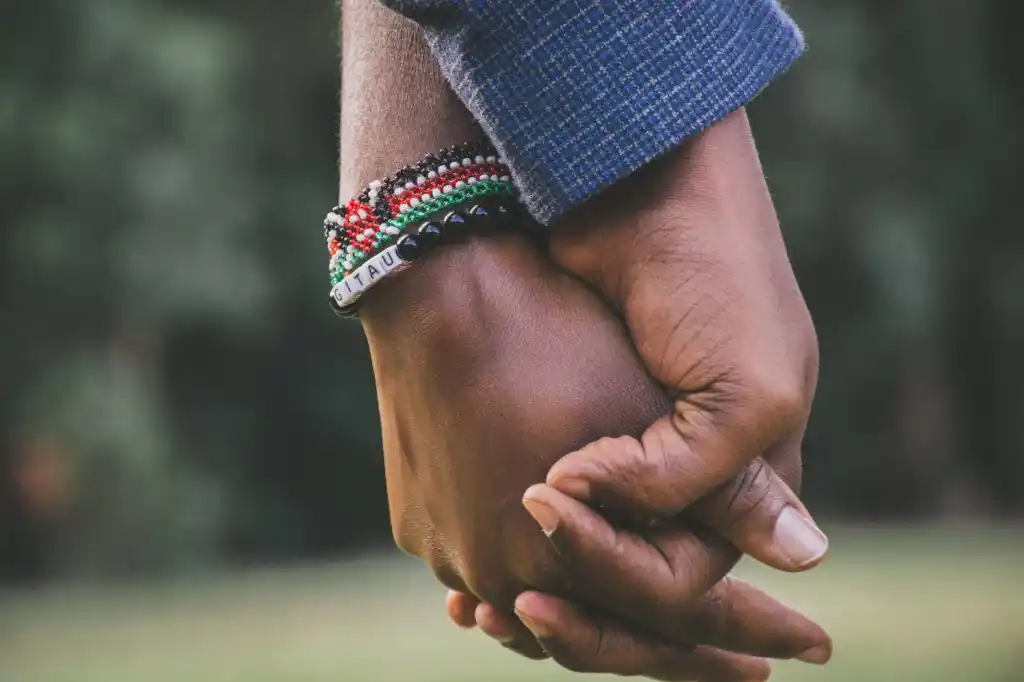Experiencing humanity means we are collectively subject to waves of emotional grief and pain in the same vein that we are afforded moments of bliss and relief. The ebbs and flows of life’s experiences create intricate webs of our personal realities, granting each of us a unique lens through which we view the world we inhabit. Such truth provides beauty and nuance, facilitating engagement in relationships with one another. It can also instill heartbreak and fear, trapping many of us in cycles of pain. This cyclical nature of pain, characterized by an inability to reconnect or release oneself from perceived negative outcomes, is often the result of a deeply traumatic experience.
As Trauma and Public Mental Health: A Focused Review explores, “The World Mental Health Surveys of adults were carried out among nearly 70,000 participants from 24 countries ranging in economic status from low to high. These data showed that at some time in their life 70.4% of the respondents had experienced at least one type of a traumatic event.” (Kleber, 2019). With this knowledge, it is clear how vastly trauma affects the human ability to surpass natural ebbs and flows of life. Trauma deeply wounds our ability to cultivate curiosity, engage in safe relationships, connect with our bodies, and reenter the fluidity of life’s essence.
If trauma is so deeply and pervasively experienced by humans, how do we identify it? As defined by Trauma and Public Mental Health: A Focused Review, “a traumatic event is defined as the exposure to: death, threatened death, actual or threatened serious injury, or actual or threatened sexual violence.” (Kleber, 2019). By this description, trauma encompasses a breadth of adverse human events all the way from war to childhood abuse. Here begs a more powerful question: how do we overcome trauma? To answer this, we are called to face the very pieces of ourselves which trauma so painfully omits.
Having the ability to cultivate curiosity is central to the art of being human. As children, our vibrant imaginations run wild; we have friends who are only ours to see, play games where there are tangible heroes and villains, and are completely capable of making out shapes in the clouds. As we emerge into adulthood, our curiosity about the state of the world is not lost but simply reimagined. We fantasize about our dream jobs, relationships, and life trajectories based on the way we define our own happiness. When we experience traumatic events, our ability to envision a bright and exciting future is often lost as we are caught in a cycle of replaying what happened to us. Our heartbreak forces away our imaginative senses so well cultivated in childhood.
As Louise DeSalvo expresses in Writing as a Way of Healing: How Telling Our Stories Transforms Our Lives “Creativity is a basic human response to trauma and a natural emergency defense system,” (Siegel-Acevedo 2021). It is finding ways to return to creativity, the very thing that was lost during trauma, which will begin the process of integration. As reflected in The Body Keeps The Score: Brain, Mind and Body in the Healing of Trauma, “Beneath the surface of the protective parts of trauma survivors there exists an undamaged essence, a Self that is confident, curious, and calm, a Self that has been sheltered from destruction by the various protectors that have emerged in their efforts to ensure survival. Once those protectors trust that it is safe to separate, the Self will spontaneously emerge, and the parts can be enlisted in the healing process” (Van Der Kolk, 2015). Cultivating curiosity after experiencing trauma is the return to a childlike sense of wonderment about one’s place in the world. It is taking the brave opportunity to bear witness to the possibilities of a different future despite a traumatic past.
Beyond curiosity, understanding the language of the body is crucial to overcoming trauma. Industrialization and advancement of the human race has separated us from the intimate knowledge of one biological fact: we are meant to be in tune with our physical bodies to the level nature requires. It is easy to lose bodily attunement in the hustle and bustle of modern day society. And yet, as The Body Keeps The Score so poignantly reveals, “In order to change, people need to become aware of their sensations and the way that their bodies interact with the world around them. Physical self-awareness is the first step in releasing the tyranny of the past.” (Van Der Kolk, 2015). Ignoring these physical sensations allow trauma to remain rampant and unchecked in the body long after imminent harm has passed. The encountered trauma weaves itself into current relationships and opportunities in the affected person’s life, leading to manifestations of self-sabotage and obsessive behaviors without conscious awareness of their origins.
The separation of body and mind that occurs during trauma can be explored in somatic and EMDR therapies which hold success in reconnecting clients to how their bodies communicate. As Bessel Van Der Kolk suggests, “The mind needs to be reeducated to feel physical sensations, and the body needs to be helped to tolerate and enjoy the comforts of touch. Individuals who lack emotional awareness are able, with practice, to connect their physical sensations to psychological events. Then they can slowly reconnect with themselves.” (Van Der Kolk, 2015). Reconnection does not speak directly to details of trauma experienced, but rather to the phenomenal ability bodies hold to heal once noticed and held in their pain.
Engaging in safe relationships is yet another aspect of overcoming trauma. Developing trust in another human, especially after a traumatic event, is akin to rebuilding a damaged muscle. Interactions must be safe and predictable, both mentally and physically. If we have trustworthy loved ones, the challenge is to continuously ask for their aid in holding our pains with us. This camaraderie is necessary for believing we have the capacity to move past unbelievable and unbearable events. When we are safe with those we love, we are accessible in ways we were not previously aware of. We are brave to levels unknown. We muster strength which shocks us. These safe relationships, however unconventional, are the catalyst to our collective healing from trauma.
The process of overcoming trauma is unique and demonstrated in varying therapeutic expressions. Cultivating curiosity, connecting with our bodies, and seeking out safe relationships are fundamental ways to integrate a traumatic reality into an actualized life. Becoming curious about our experiences, however painful, opens up a pathway to accepting a traumatized body for its reality. The opportunity for integration occurs when we hold the strength of our trusted helpers and loved ones near, allowing them to share space with our grief. Community is where our hearts are invited to release their weapons. Despite the fortitude required to begin overcoming trauma, it is balanced with the intense importance of being gentle and compassionate with oneself.
The Body Keeps The Score reflects, “Truth, like love and sleep, resents approaches that are too intense.” (Van Der Kolk, 2015). Releasing oneself from the confines of a traumatic past is daunting and requires a deliberate, predictable approach with an individualized path for healing. Overcoming trauma is not a process which can be rushed nor pushed deep down without intense consequences. The circle of reliving past trauma, consciously or subconsciously, may be severed when we begin to take courageous steps in trusting the collective love of humanity, natural ebbs and flows of life, and the understanding that we are not alone.
A., V. der K. B. (2015). The body keeps the score: Mind, brain and body in the transformation of trauma. Penguin Books.
Kleber RJ. Trauma and Public Mental Health: A Focused Review. Front Psychiatry. 2019 Jun 25;10:451. doi: 10.3389/fpsyt.2019.00451. PMID: 31293461; PMCID: PMC6603306.
Siegel-Acevedo, D. (2021, July 1). Writing can help us heal from trauma. Harvard Business Review. https://hbr.org/2021/07/writing-can-help-us-heal-from-trauma (depreceated)




